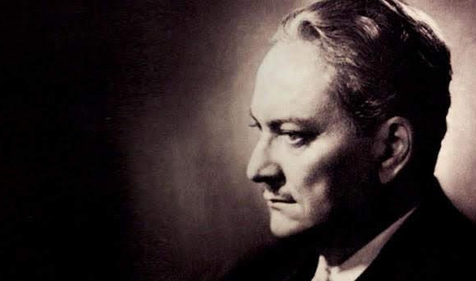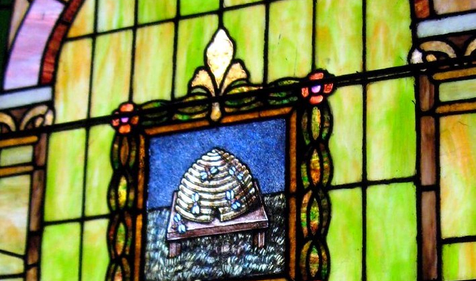As Freemasons, we memorialize our Brethren in a myriad of ways after they depart to the Celestial Lodge. In our article, we reflect on Masonic funeral rites, as well as popular Masonic mourning art trends and notable gravestones from history.
Men form unbreakable bonds through Freemasonry. Our Brotherhood is comprised of a tight-knit group of men who have made solemn vows to one another, becoming friends and Brothers in Masonry and beyond, committed to supporting each other in the good times and bad. Being a Mason is a lifelong journey not taken alone but rather completed side-by-side with Brethren, learning and growing together through ritual and service.
We recognize one another’s accomplishments in the Craft and, often, in personal endeavors throughout our Masonic journeys. We gather to honor important milestones for each other, including when a Brother passes to the Celestial Lodge.
Masonic Funeral Rites
Masonic funerals are among the few ceremonies performed in public by Freemasons. They are never intended to replace a traditional funeral held by a Brother’s immediate family. A Mason usually requests a Masonic funeral during life or it may be arranged by their surviving spouse or family members. For Masons, a Masonic funeral is an opportunity to be honored by those who have known him and his works.
These services are provided to members at all three levels in the Blue Lodge: Master Masons, Fellow Crafts, and Entered Apprentices. Like all Masonic ceremonies, funerals are unique, with rituals and symbolism that may seem foreign to those outside the fraternity. It is custom for a lambskin apron to be draped on the deceased’s casket to signify his Masonic membership. Additionally, Masons in attendance usually wear their traditional white aprons and formal wear as they would during any sacred Masonic service. The ceremony itself is typically presided over by the Master of the Lodge. While much of the service’s rhetoric may seem religious, Masonic funerals do not follow a specific faith.
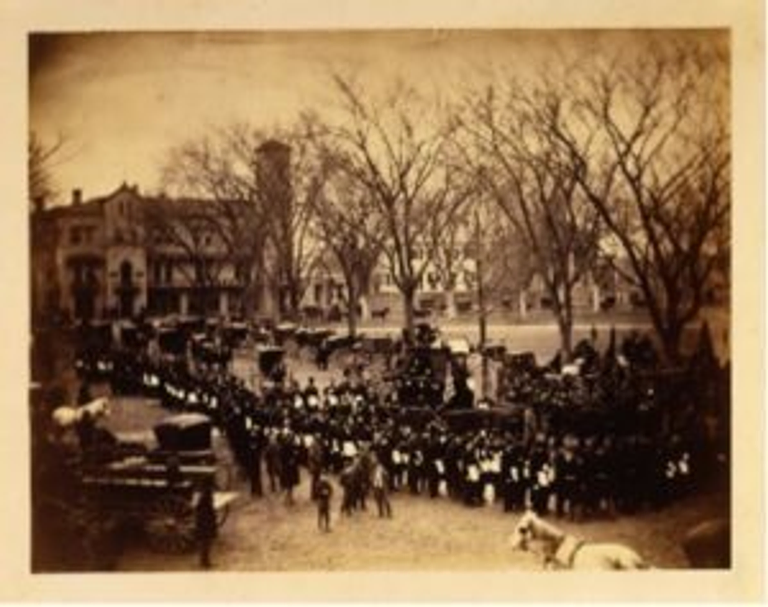
The primary focus of a Masonic funeral is to honor the deeds of the Brother who has passed. Brethren reminisce about the Brother’s accomplishments during his time on earth and how his death might inspire other Masons in thought and deed. Like all Masonic rituals, it encourages introspection and growth in the attendees. It aims to help people engage with death in a logical, thoughtful manner.
Masonic Mourning Art
Over the centuries that Speculative Freemasonry has enjoyed prominence, various memorialization trends have come and gone. What has remained is the tradition of honoring the dead through obituaries, objects, and works of art. From the beginning of Freemasonry in Europe, mourning art was a popular method of showing grief. Masons would create ornate works depicting the deceased alongside powerful Masonic symbols, such as the all-seeing eye, Jacob’s ladder, and others.
In the United States, Masonic mourning art saw a particular rise in popularity following the death of George Washington. In the months following his death, communities across the country held their own memorial events, resulting in a surge of mourning art, including prints, ceramics, and jewelry, which relayed the news of Washington’s passing.
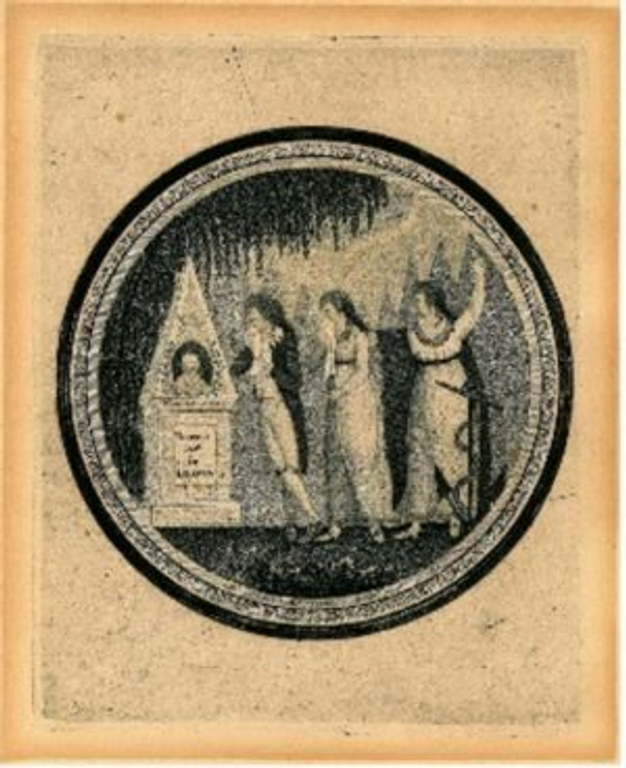
Another trend in mourning art occurred during the 19th century when regalia manufacturers produced reversible Masonic and fraternal ribbons. These garlands were made with one side in black detailing the deceased’s name, Lodge, and Masonic station.
Masonic Gravestones
Perhaps the most notable token of remembrance in Masonry is the gravestone. It has long been custom for the gravestones of Masons to be adorned with fraternal iconography, often more than one symbol per stone. The most common and easily identifiable is the square and compasses. This symbol is the most universally used in Masonry and is often depicted with the letter G within the icon. Other common symbols that appear on gravestones include the all-seeing eye and pillars, representing Solomon’s Temple, the allegory of which much of Freemasonry’s teachings are built upon.
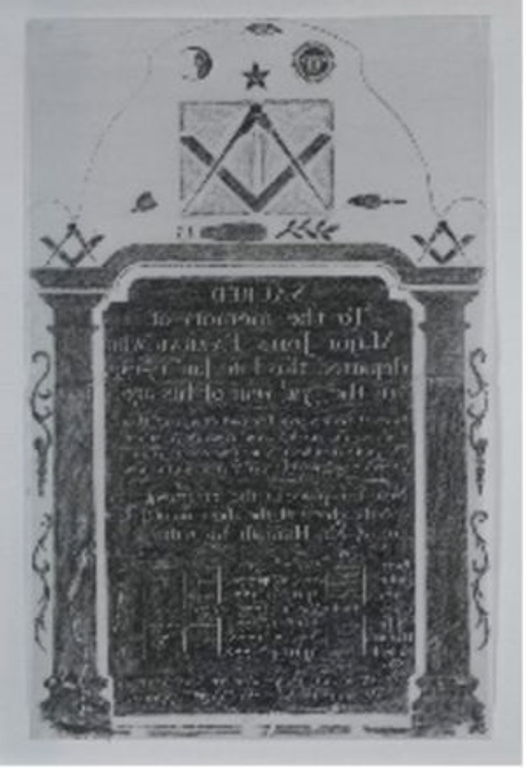
Famous Masonic Funerals
As one of the few public Masonic ceremonies, the Masonic funerals for some prominent men have become renowned. Because of his status as a national leader and hero, George Washington’s was particularly notable. His funeral was organized by the members of his local Masonic Lodge, Alexandria Lodge #22, and was held on December 18, 1799. The Bible used at Washington’s funeral is owned by Federal Lodge № 1 in Washington, D.C.
A more recent funeral ceremony gained national attention when on July 29, 2020, Congressman John R Lewis was honored by his Brethren in the Georgia State Capitol. A Freemason for decades, Brother Lewis was a senior Freemason in the Most Worshipful Prince Hall Grand Lodge F&AM of Georgia and a member of the Scottish Rite Southern Jurisdiction. Not only was his Masonic funeral televised, but upon his death, he became the first African American lawmaker to lie in state in the rotunda of the U.S. capitol. His death moved the entire country, and at his funeral, three former presidents were in attendance.
Related Stories
Discover additional Scottish Rite blogs and news on this topic.
-
Manly P. Hall: Philosopher, Mystic, and Freemason
Famous Masons
Read More about Manly P. Hall: Philosopher, Mystic, and Freemason
-
What Does the Beehive Mean in Freemasonry?
Degrees
Read More about What Does the Beehive Mean in Freemasonry?
-
Was Robert Burns a Freemason?
Famous Masons
Read More about Was Robert Burns a Freemason?

